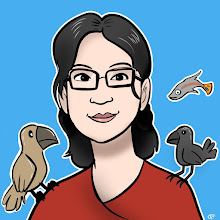


So, as you can tell, I am about week behind in getting my posts up. However, in retrospect, this day that I am currently writing about has to be the highlight of the trip. First, we met up with this very cool guy, Barry, and some of his assistants and he explained to us how the Sea Turtle Conservation project was started and what. They had found what they though was a nest by the little tracks to the water. On Morgan Lewis beach, the nesting turtles are the Leatherback turtles.
So, as part of their efforts, every nest they find is excavated, and every non hatched egg is opened to see what stage of development it was in. The picture shows an egg, and you can see the embryo and yolk sack. When they are fully developed, they use their egg tooth to get out of the egg. They then manage to get out of the sand (the females lay their eggs in nests that are a couple feet deep), and using the light reflected from the ocean, they make their way to the ocean. While they were digging out the nest, they found a coupe that hadn't made it, but we did find one live one. The group named him Zeus, and at dusk, we put him in the sand and cheered him on as he made his (roundabout) way to the ocean. Because of the tourist development on the west coast of Barbados, the turtle project get calls from people saying there are a bunch of baby turtles in the lobby. The bright lights of the hotels disorient the baby turtles, so they think they are heading to the ocean when they are in fact heading the opposite direction.
So, after a BBQ on the beach - nothing like sand as a condiment to the burgers - we accompanied tome volunteers on the turtle walk. Female turtles come up at night to lay their eggs. On the way back, as we were literally ready to head back to the cars, someone found some tracks. We were luck enough to see two of thes HUGE turtles. The carapice (shell) length on one of the females was 1.67 metres long! It was very cool. If you ever have the chance to see these guys, I highly recommend it! June is apparently peak hatching season for the beach on the side of the island where the research institute is located. Can't wait to watch the babies!


















